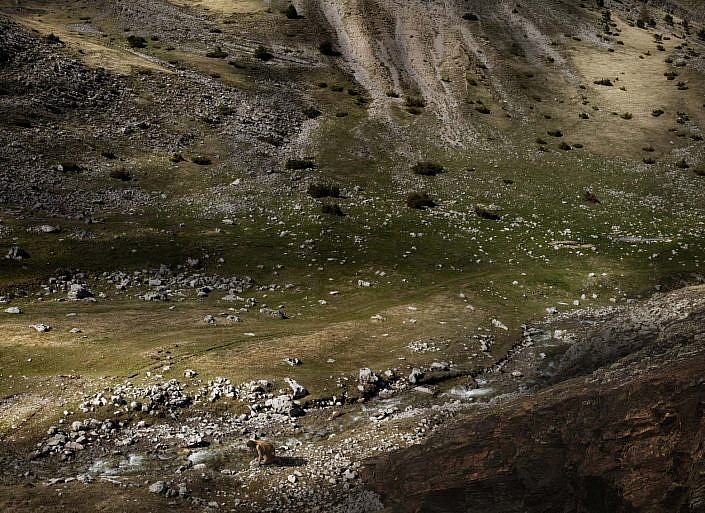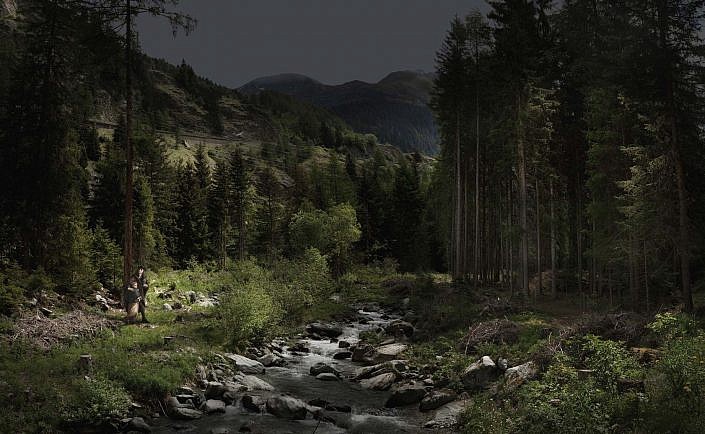HOMMAGES
HOMMAGES (En) – 2013
Through a series Tourists, 2010 My sentimental Archives, 2011, Nicolas Dhervillers affirmed its commitment not to create photography that starting from existing images. Opening the debate on the artistic authority, it reactivates doing an old practice from antiquity to the present day, is to copy, ownership of a pattern, its diversion. Abduction on the internet and in the archives of Switzerland, he continued with Tributes, his work borrowings, reactivation and assimilation through photography, drawing his characters this time in history painting.
Nicolas Dhervillers then considers the masterpieces of Flemish and French seventeenth and eighteenth centuries. In the history of art, many artists have been dispossessed of their work. We think, in fact, the table Bril touched by another more famous Flemish painter Peter Paul Rubens. Owner of this work in 1640, the latter superimposed Saint Jerome Bril, an attractive Psyche! It is also believed that the paintings were painted Dughet 1640, perfectly executed and managed landscapes, Poussin appropriated shortly later.
In grandiose compositions, Nicolas Dhervillers exalts the vision of a man immersed in the heart of a lush. Its isolation is the sine qua non of its development. Tributes thus refers to the romantic myth of abandonment and the quest itself. Paradoxically, the extras seem to have a moment of idleness in this ideal landscape, yet they embody many souls in search of identity.
HOMMAGES (Fr) – 2013
Dans la continuité de ses séries « Tourists » et « My Sentimal Archives », Nicolas Dhervillers se emprunte cette fois aux chefs d’œuvres flamands et français des XVIIème et XVIIIème siècles.
Dans l’histoire de l’art, nombre d’artistes ont été dépossédés de leur œuvre. On pense en effet, au tableau de Paul Bril retouché par un autre peintre flamand plus célèbre encore, Pierre Paul Rubens. Propriétaire de cette œuvre en 1640, ce dernier a superposé au Saint Jérôme de Bril, une séduisante Psyché ! On pense aussi aux tableaux que Gaspard Dughet avait peint en 1640, paysages parfaitement exécutés et maîtrisés, que Nicolas Poussin s’appropria peu de temps plus tard.
Dans de grandioses compositions, Nicolas Dhervillers exalte la vision d’un homme plongé au cœur d’une nature luxuriante.
Son isolement devient la condition sine qua none de son épanouissement. « Hommages » renvoie ainsi au mythe romantique de l’abandon et de la quête de soi. Paradoxalement, si les figurants semblent s’accorder un moment d’oisiveté dans ce paysage idéal, ils incarnent pourtant autant d’âmes en quête d’identité.










